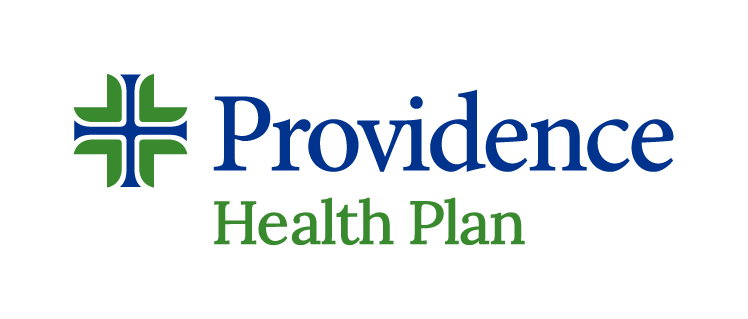March 23, 2021
by Praveen Thadani, President, PriorityHealth
It’s something we all keep hearing—the year 2020 created permanent change in so many aspects of our lives. A recent poll by Kantar U.S. found that 73% of Americans believe life will never be the same after COVID-19. Like many other industries, the past year created dramatic shifts in health care and health insurance that will continue. At Priority Health, we know these trends matter to our members, providers, employers, agents and community partners that all share our commitment to improving health. Here are seven trends I expect to impact care and coverage in 2021.
 1. Virtual and contactless care delivery
1. Virtual and contactless care delivery
COVID-19 led to a large increase in the use of virtual care and prescription delivery when many entities waived fees for these benefits due to limitations on in-person services. Efficient and cost effective, virtual delivery of services allowed individuals to safely get the care they needed from the comfort and safety of home. Popularity of virtual care is expected to continue throughout 2021. In fact, Priority Health’s virtual-first Telehealth plan accounted for more than 9.8% of new members and more than 5,000 members total during the 2021 individual Open Enrollment Period. The plan, the first of its kind to be offered in Michigan, connects members with a virtual Primary Care Physician (PCP)—improving access for rural customers and offering a convenient option for anyone who prefers a digital-first approach.
2. Easier, more personalized experience
Consumers increasingly expect simplicity and a better health care experience based on their needs and preferences. We recognize that many members have questions and want to simply find answers on their own (self-service), or they have a question and need us to consult with them. We also know health insurance can be complicated, so members sometimes don’t even know what questions to ask—which is why we proactively reach out to them and serve up solutions. As an example, Priority Health personalizes member communications using simple educational “nudges” called Next Best Actions. These personalized recommendations based on data triggers help educate, inform and motivate behavioral change. They can also improve health outcomes, drive self-service and encourage appropriate in-network care for our members.
In terms of coverage, plan flexibility has become essential as uncertainty about COVID-19 continues. Health Payer Intelligence found that 34% of Medicare Advantage Plans reported they would offer COVID-19 benefits in the new year to adapt to meet member needs. Priority Health continues to invest in $0 premium products and supplemental benefits in the Medicare market, so our members can choose an affordable plan that best fits their needs and preferences. Some plan extras include dental, vision and hearing coverage—along with over-the-counter allowances.
3. Cost transparency

Consumers deserve to have the information and tools they need to make informed decisions about their care and coverage. We support the decision of the Center for Medicare & Medicaid Services to help all Americans know the cost of a health care service before they receive it. Because we know the prices can vary greatly based on the location, health care system, provider and more—having cost information available helps consumers shop, compare prices and plan. Our Cost Estimator has resulted in over $13 million of shared savings since launching in 2015, with more than 12,000 of our members using the tool each month to find the price of procedures and prescriptions. We applaud efforts that drive healthy competition among health plans and ultimately lower the total cost of care—this is one area where we believe we can excel.
4. Improvements in quality and value
The pandemic highlighted the benefits of value-based care models, which reward providers for delivering quality care and improving patient outcomes. Priority Health is a leader in developing these programs, which replace traditional fee-for-service models that compensate providers based on the number of services they deliver. As many patients delayed care during the pandemic, providers faced uncertainty. Value-based care arrangements can help support providers during ambiguous times, while also helping control rising health care costs. In 2020, more than half (54%) of our provider contracts were value-based arrangements. This was a sizeable increase from 28% in 2019, and we expect this growth trend to continue.
5. Resources for mental health
COVID-19 sparked more conversations than ever regarding the importance of mental health as part of overall care. According to a study by ValuePenguin, 47% of Americans reported feeling lonelier and more isolated during the pandemic. Our behavioral health experts at Priority Health recognized the need for safe access to mental health support early during the spring 2020 stay-at-home orders. We worked quickly to launch myStrength—an online mental wellness service—free to all members. We also offered $0 behavioral health virtual care across most of our plans. As conversations regarding mental wellness continue, these offerings will become more common—and even table stakes—for health plans.
6. Adapting to the needs of a changing workforce
Millions of Americans transitioned to work from home in 2020, and according to an UpWork survey, 80 million are expected to work remotely throughout 2021. This shift, along with younger generations entering the job force, have employers looking for more flexibility in the plans they offer employees. Many have begun to turn to self-funded plan options to offer the quality health plans their employees are looking for, without a hefty premium. At Priority Health, 25% of our commercial group plans are currently self-funded and more company leaders are showing interest in this option. That’s why we launched an educational webinar series this year, designed for businesses that want to explore self-funding for more control, flexibility and cost savings.
7. Addressing gaps in health equity
In a world filled with inequity, unfortunately health care is not exempt. It’s critical for providers and insurers to take steps to end care inequity and improve health outcomes for everyone, particularly our most vulnerable neighbors.
At Priority Health, we’re working to address social determinants of health (SDoH) within Michigan communities. In fact, we recently became the first insurer in Michigan to offer provider-based incentives for tracking SDoH in their patient base; a value-based approach that offers insight into social factors that may impact health outcomes. We are also providing communities with immediate support by sponsoring free diaper distribution with partners across the state and offering transportation services for health appointments. By educating ourselves, addressing these societal factors and providing programs to support these initiatives, we can improve quality of life for all.
There is much work to be done in the coming year. I’m feeling hopeful and energized knowing that at Priority Health, we have talented teams and strong partnerships with Michigan communities, providers, employers and agents. Together, we stand ready to support our members as their needs change and priorities shift. As we continue to collaborate and put our customers first in everything we do, I’m confident these trends will challenge us to remove barriers to simple, affordable and high-quality care.
Praveen Thadani is the President of PriorityHealth.
Learn How ACHP Members are Helping Transform Care Across the Country








 1. Virtual and contactless care delivery
1. Virtual and contactless care delivery


























